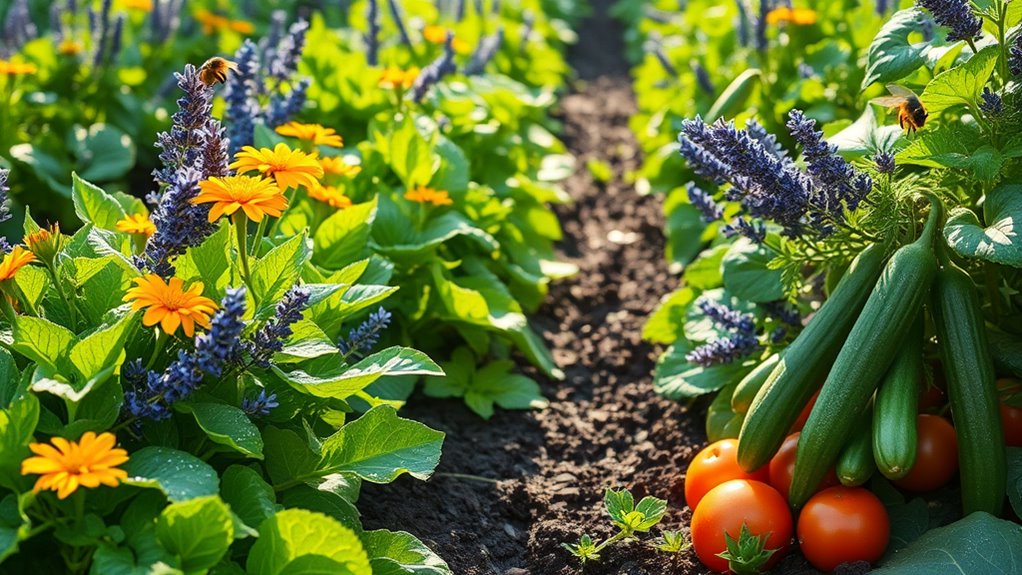What I Planted Next to My Veggies That Doubled My Yield
If you’re looking to boost your vegetable yields, companion planting might be your key to success. By strategically placing certain plants next to others, you can enhance growth, deter pests, and improve overall health. For instance, consider the impact of herbs on your tomatoes or certain root crops on others. Understanding these relationships can transform your garden. Curious about which plants to pair for optimal results? Let’s explore some proven combinations.
Benefits of Companion Planting
When you pair certain vegetables together through companion planting, you not only maximize your garden space but also enhance their growth. Effective plant combinations can deter pests, balance nutrient usage, and create a healthier ecosystem. For instance, planting basil alongside tomatoes can boost flavor and repel harmful insects. Additionally, using effective companion planting combinations can significantly improve crop yields and strengthen pest resistance in your garden.
Top Companion Plants for Boosting Vegetable Growth
Although many gardeners focus on soil quality and watering techniques, incorporating specific companion plants can significantly enhance vegetable growth. Here are some excellent choices you can consider:
| Companion Plant | Benefits |
|---|---|
| Basil | Repels pests; enhances flavor |
| Marigold | Attracts pollinators; deters nematodes |
| Nasturtium | Attracts aphids away; edible flowers |
| Garlic | Repels insects; boosts growth |
| Chives | Improves crop resilience; pest deterrent |
Utilizing these plants can lead to impressive results! Additionally, employing companion planting combinations can create a thriving garden ecosystem that naturally supports plant health and productivity.
How to Pair Plants for Maximum Yield
Pairing plants effectively can significantly boost your vegetable yield, as certain combinations enhance growth and deter pests.
To maximize your results, consider these pairings:
-
Tomatoes and basil: Basil improves tomato flavor and wards off pests.
-
Carrots and onions: This duo minimizes carrot fly damage.
-
Beans and corn: Beans fix nitrogen in the soil, benefiting the corn.
Implement these combos for a thriving garden! Additionally, companion planting is a practice that not only increases yields but also fosters a healthier garden ecosystem.
Tips for Maintaining Your Companion Plant Garden
Maintaining a companion plant garden requires careful attention to ensure your carefully chosen pairings thrive.
Regularly monitor moisture levels, ensuring both your veggies and companions get adequate water. Mulching helps retain soil moisture and suppress weeds.
Prune overcrowded plants to improve airflow, reducing disease risk. Finally, stay vigilant for pests, using natural deterrents when necessary to protect your growing companions. Additionally, incorporating compatible plant pairings can enhance your garden’s overall success and resilience against pests.
Observing and Measuring Success: Tracking Yield Improvements
To effectively observe and measure the success of your vegetable yield improvements, you’ll want to establish clear criteria and tracking methods early on.
Consider these practical approaches:
- Use a journal to document planting dates, growth stages, and harvest times.
- Weigh your harvests to quantify yield increases.
- Compare results from companion planting to previous seasons for accurate assessments.
This will help you identify what truly works.

